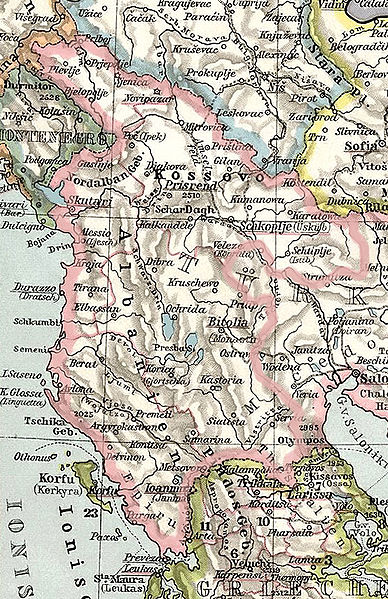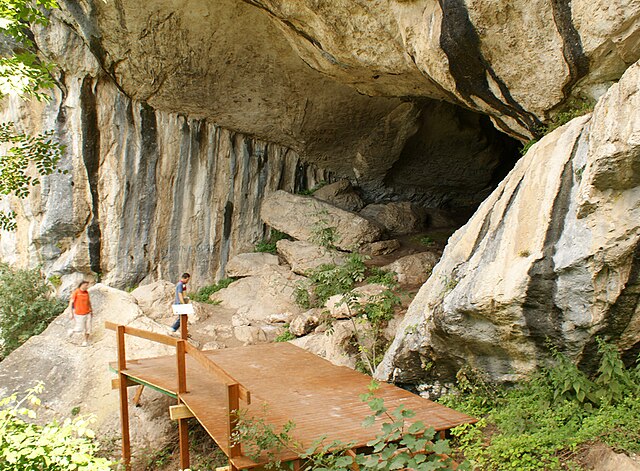Albanian National Awakening
The Albanian National Awakening, commonly known as the Albanian Renaissance or Albanian Revival, is a period throughout the 19th and 20th century of a cultural, political, and social movement in the Albanian history where the Albanian people gathered strength to establish an independent cultural and political life, as well as the country of Albania.
The 4 Ottoman vilayets (Kosovo, Scutari, Monastir and Janina), proposed as Albanian vilayet, by the League of Prizren 1878.
League of Prizren, group photo, 1878
Ethnic distribution of Albanians 1898.
Guerrilla fighter Isa Boletini.
During classical antiquity, Albania was home to several Illyrian tribes such as the Albanoi, Ardiaei, Bylliones, Dassaretii, Enchele, Labeatae, Taulantii, Parthini, Penestae, Amantes, and many others, but also Bryges and Epirote tribes, as well as several Greek colonies established on the Illyrian coast in cooperation with the local Illyrians, notably Epidamnos-Dyrrhachium and Apollonia.
The Cave of Pellumbas near Tirana, used as a settlement for ancient humans during the Middle Paleolithic period.
King Gentius, The last ruler of the Ardiaean dynasty.
Queen Teuta of the Ardieai orders the Roman ambassadors to be killed.
Ancient Greek coin of Dyrrachium.








